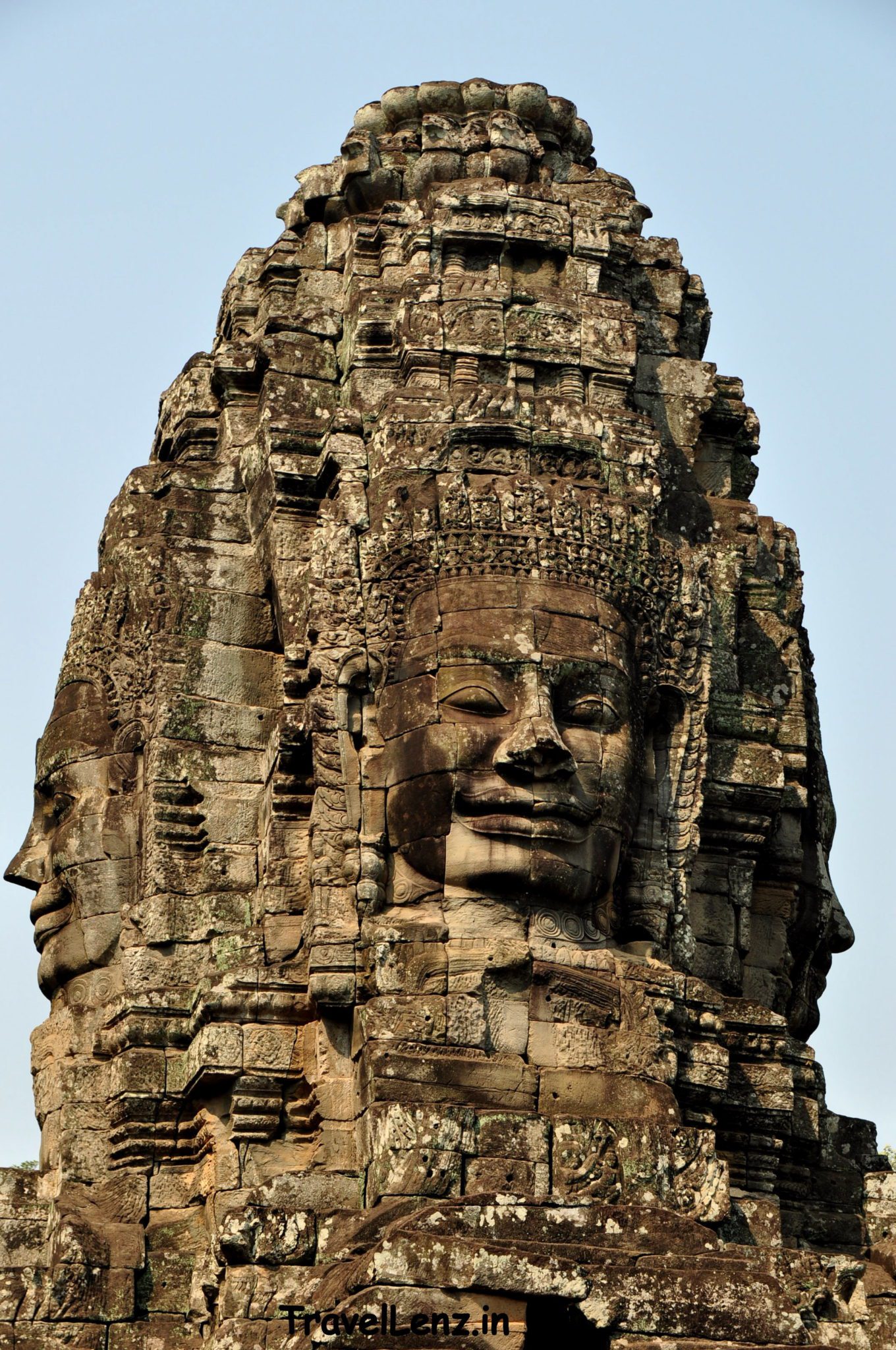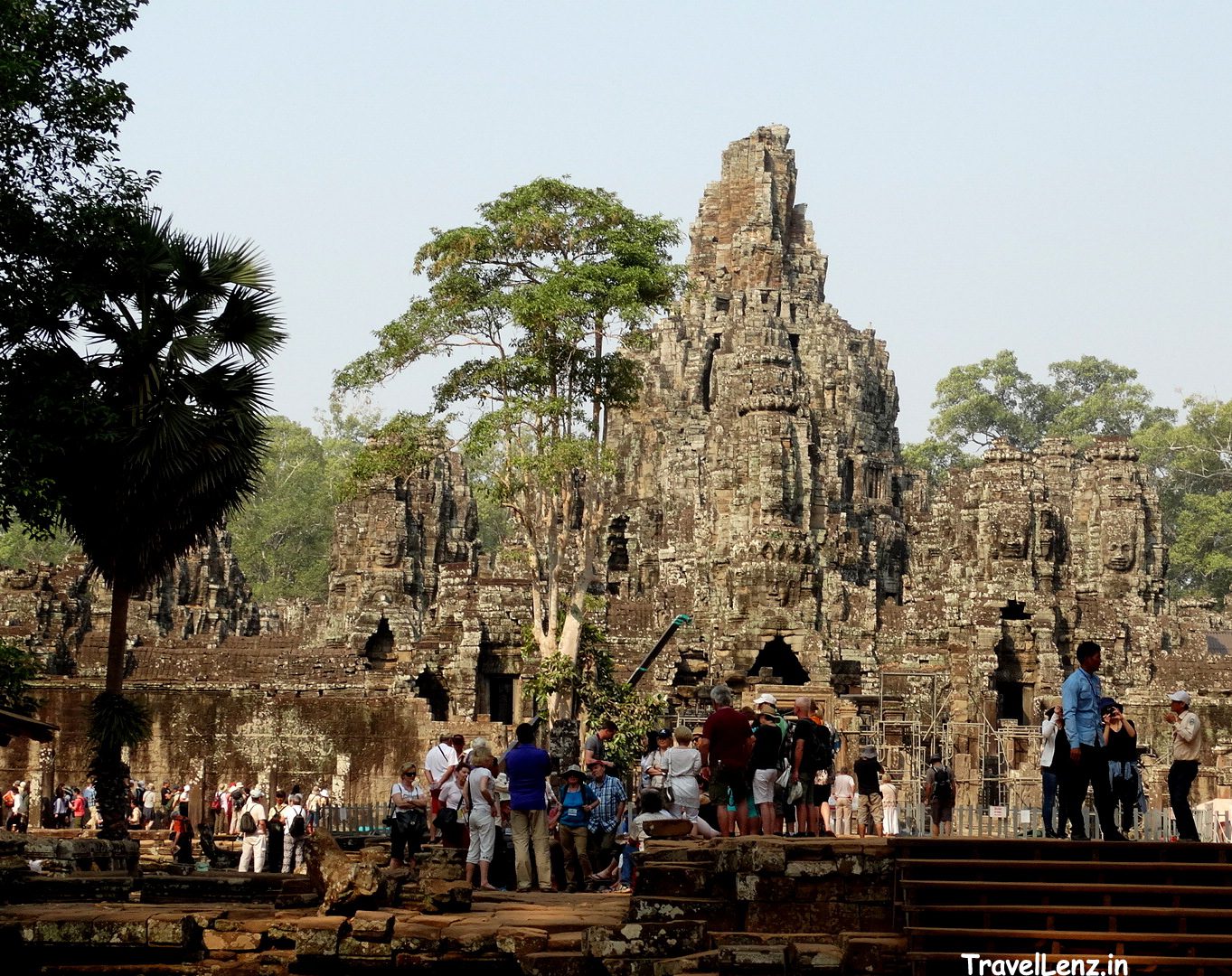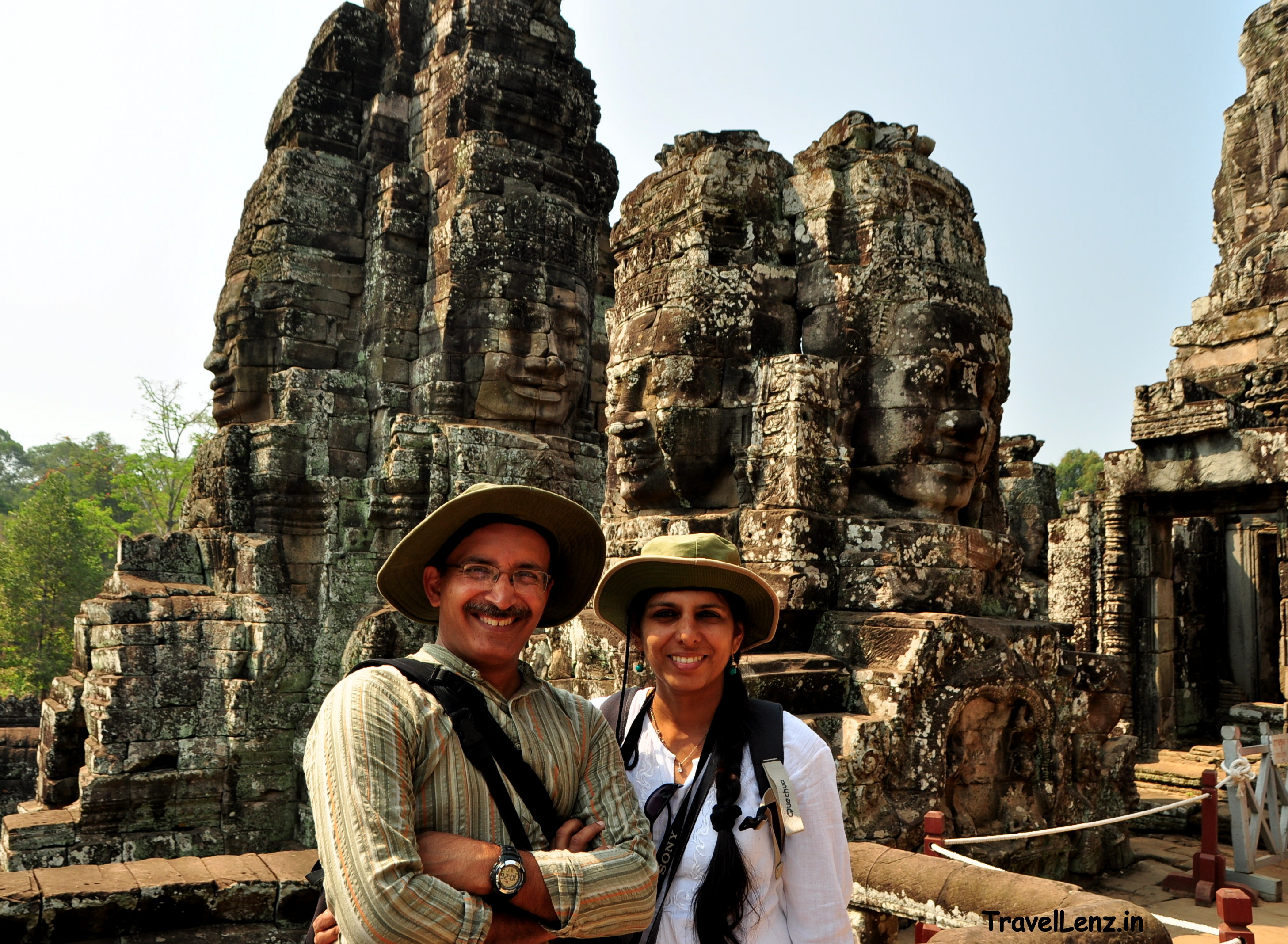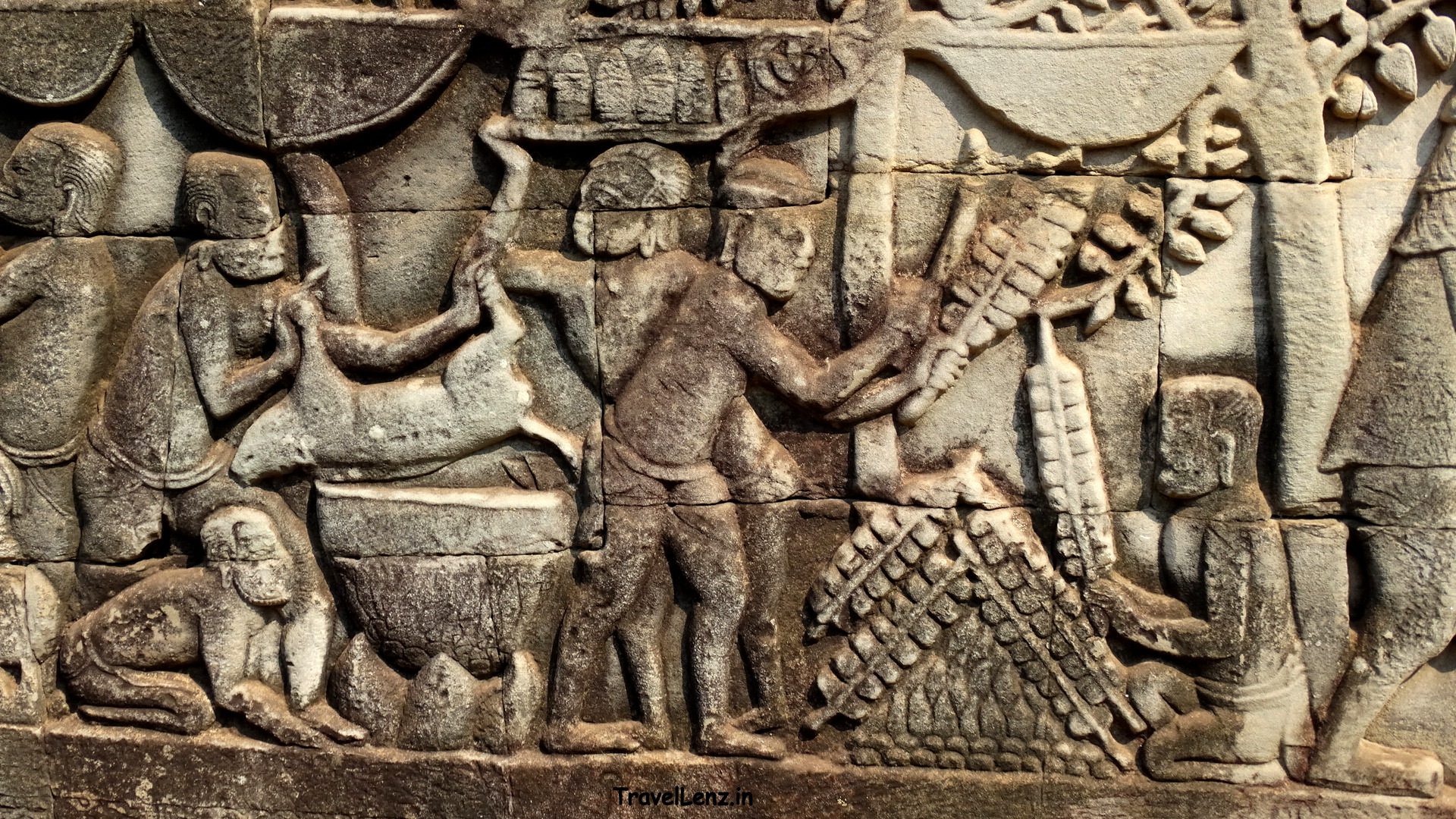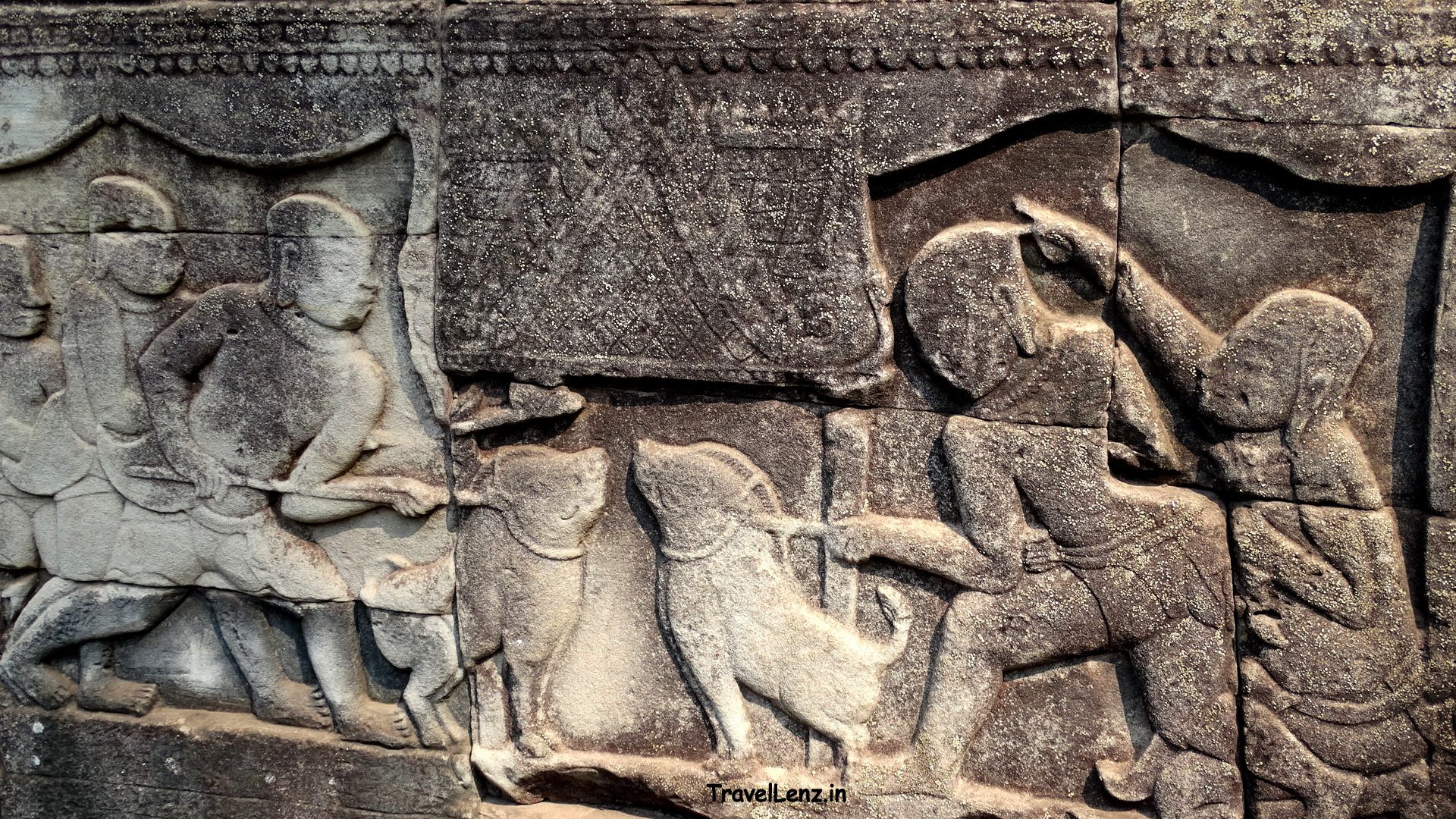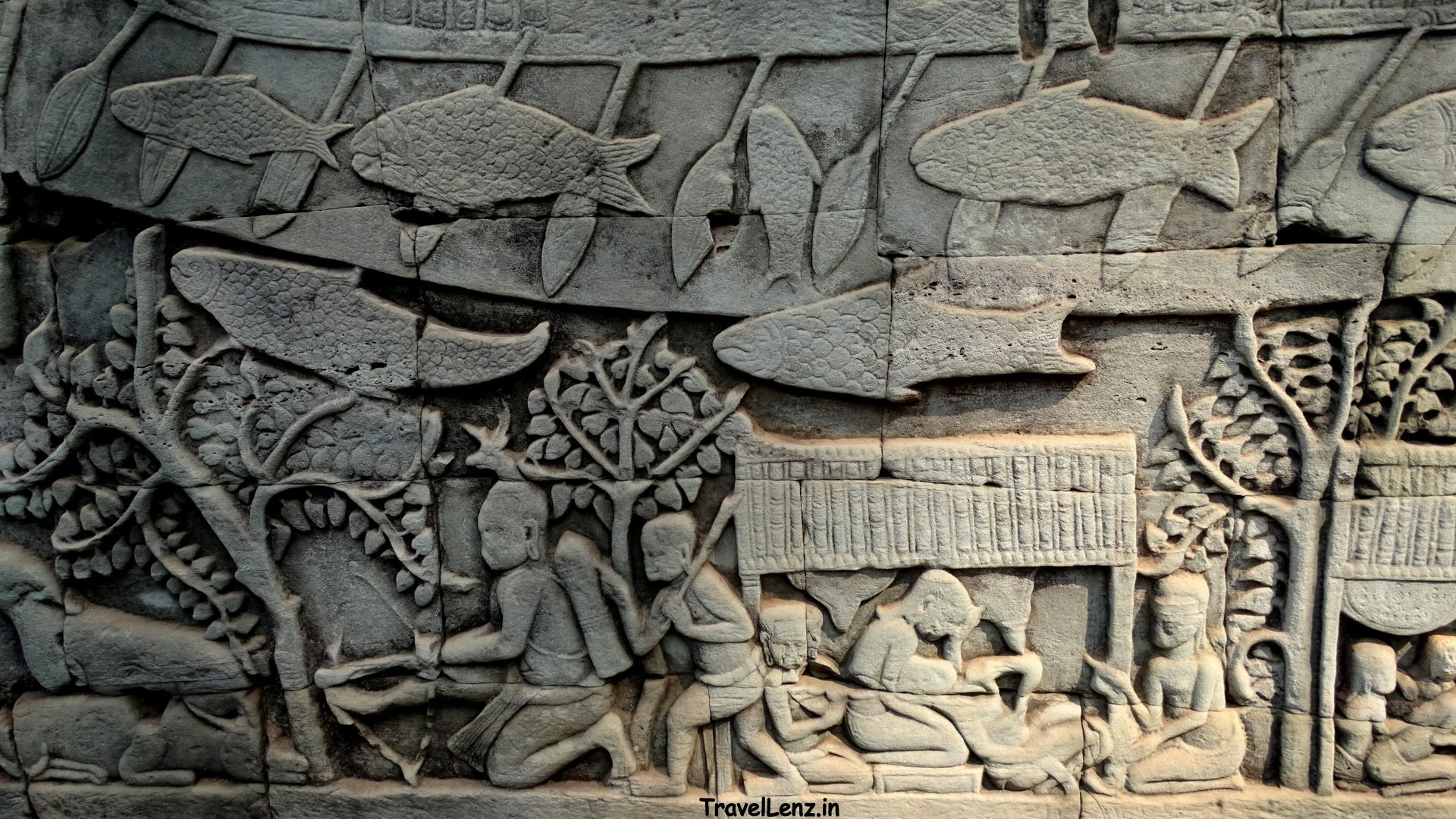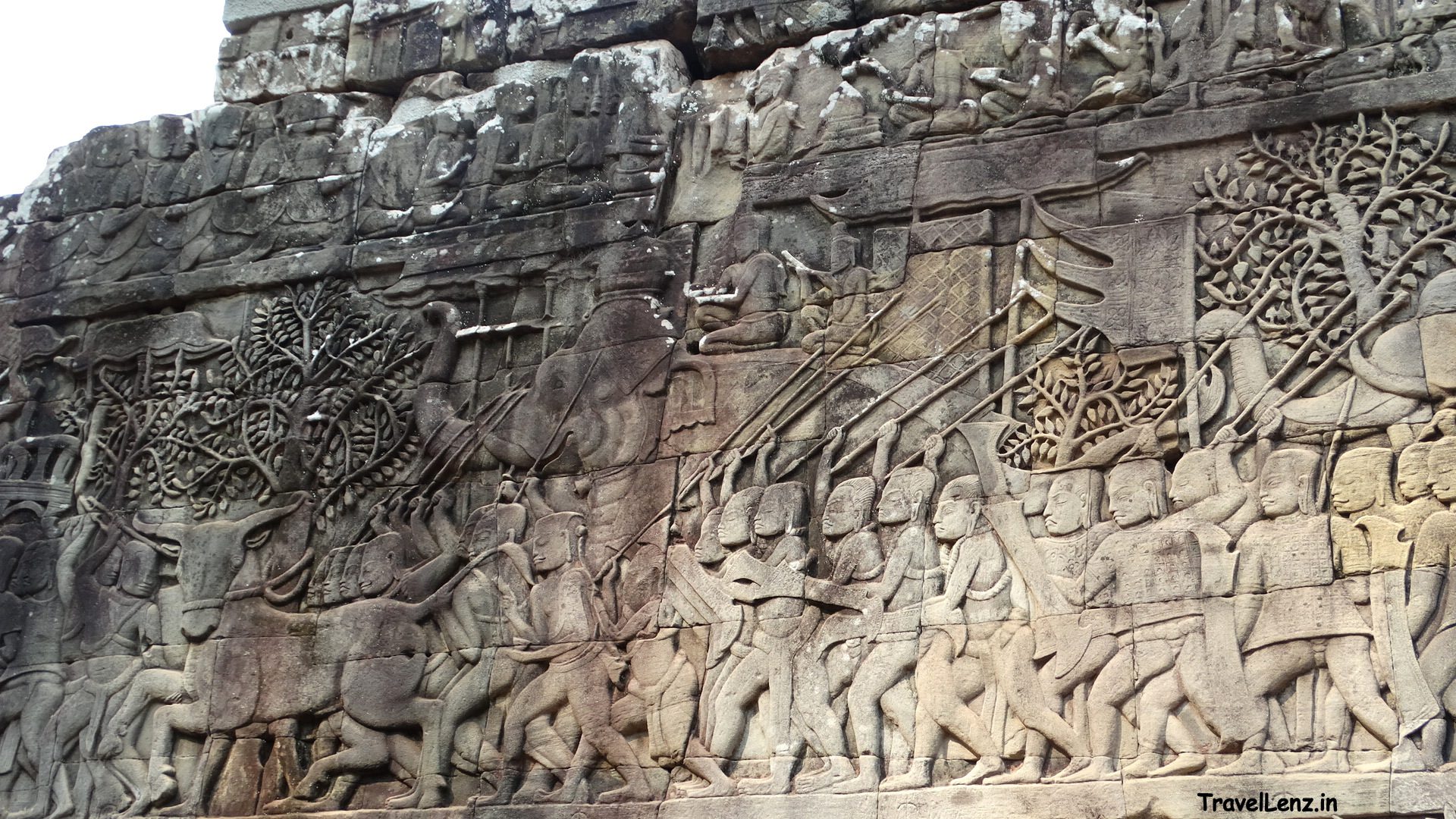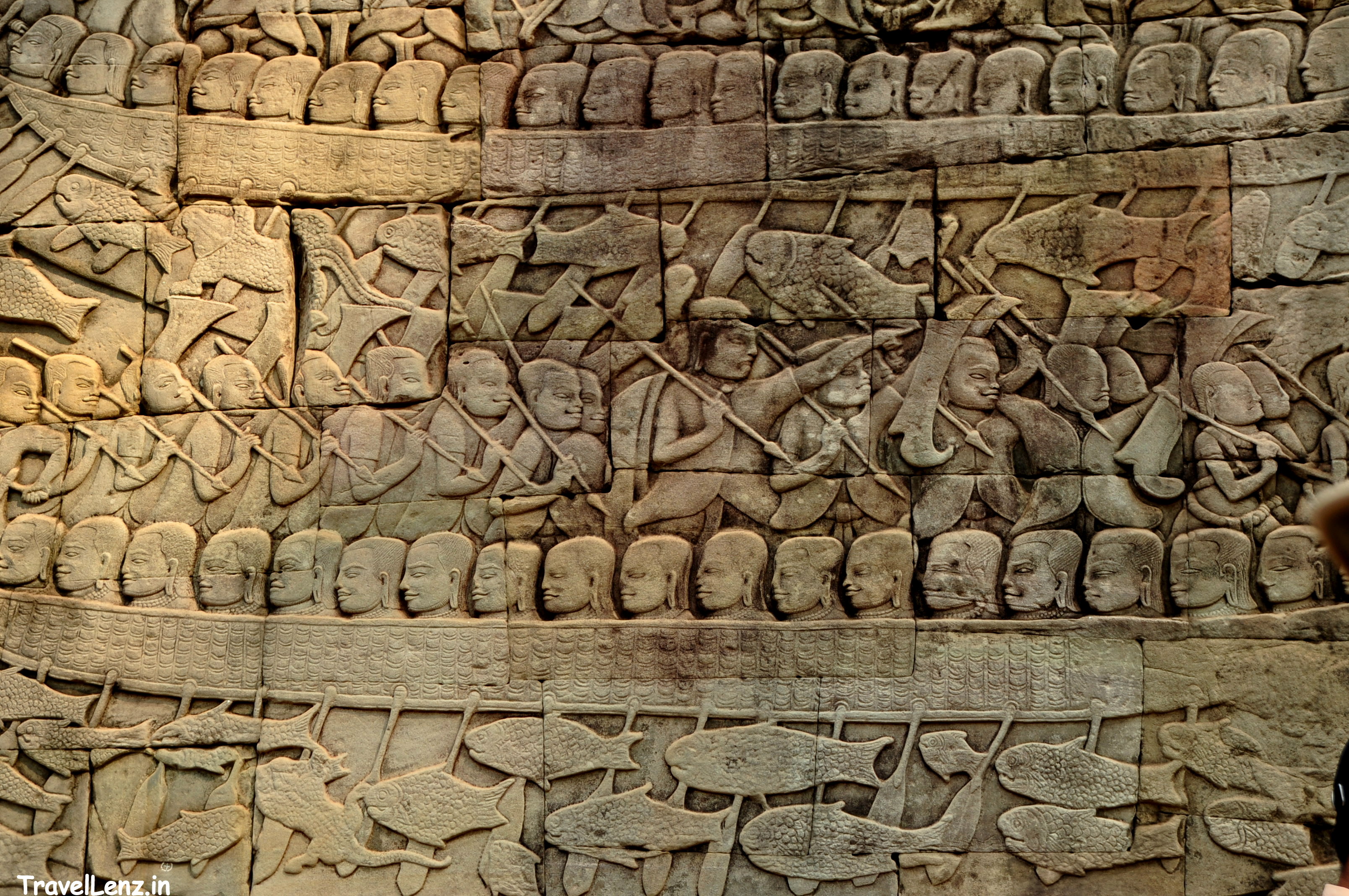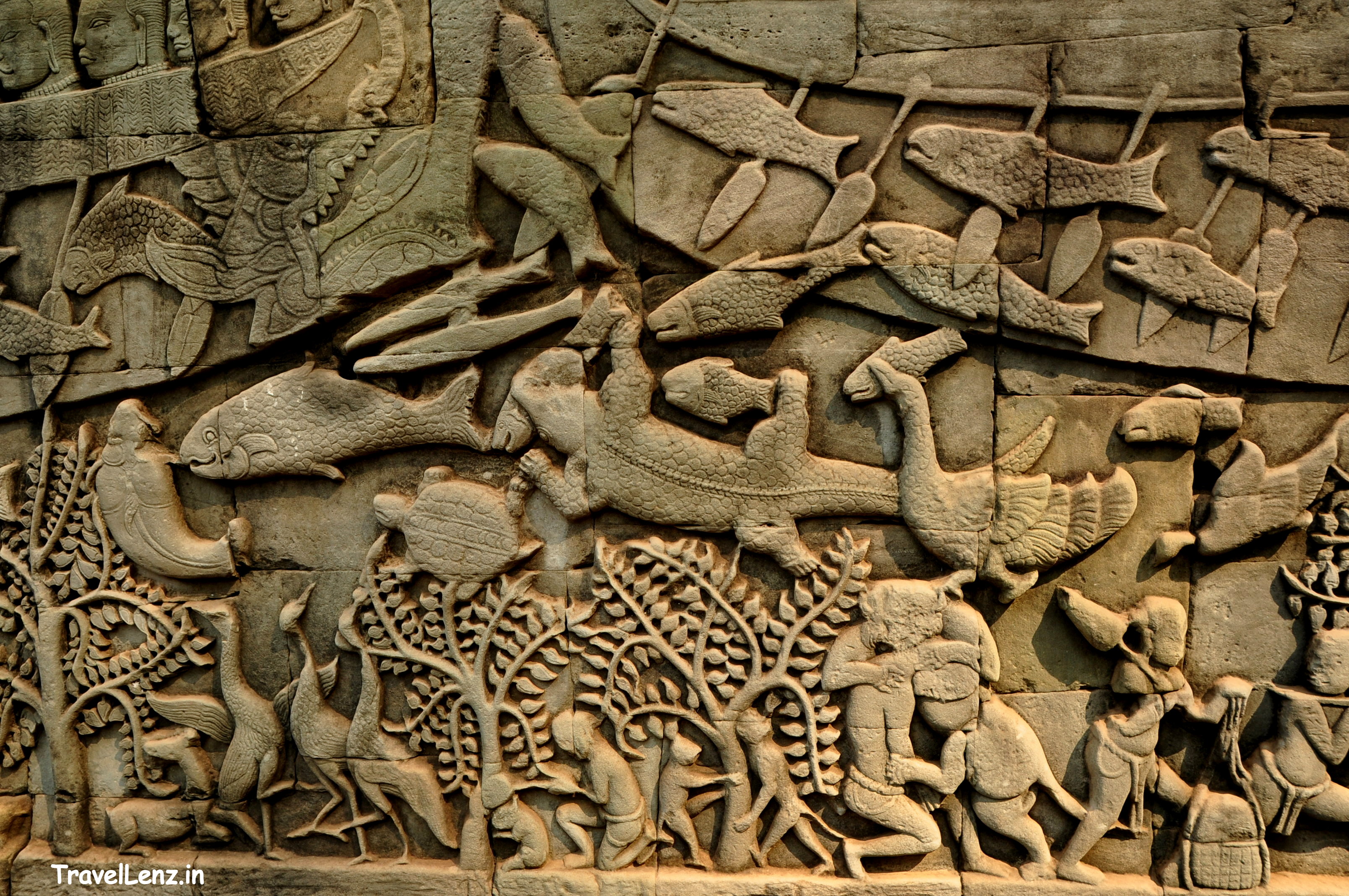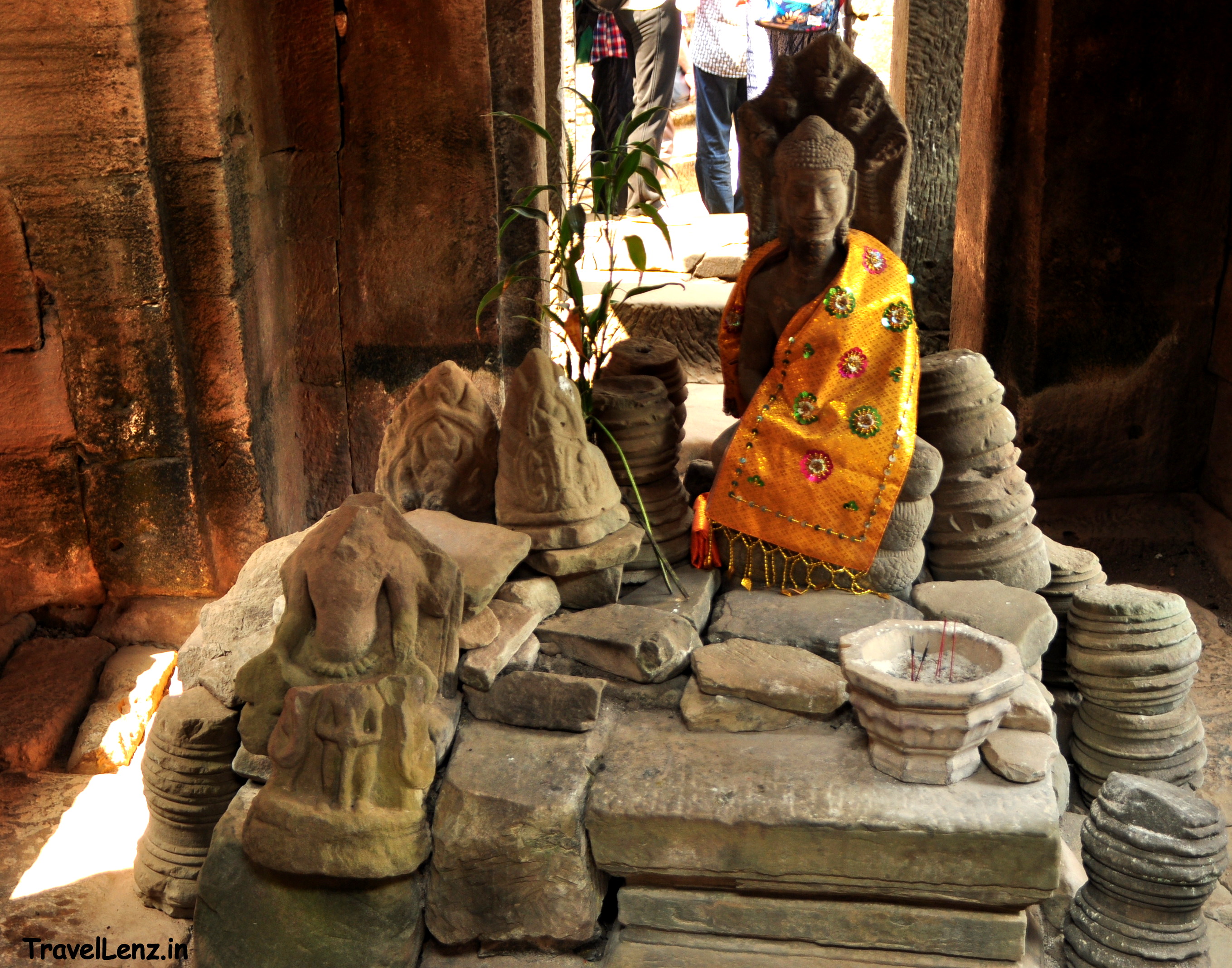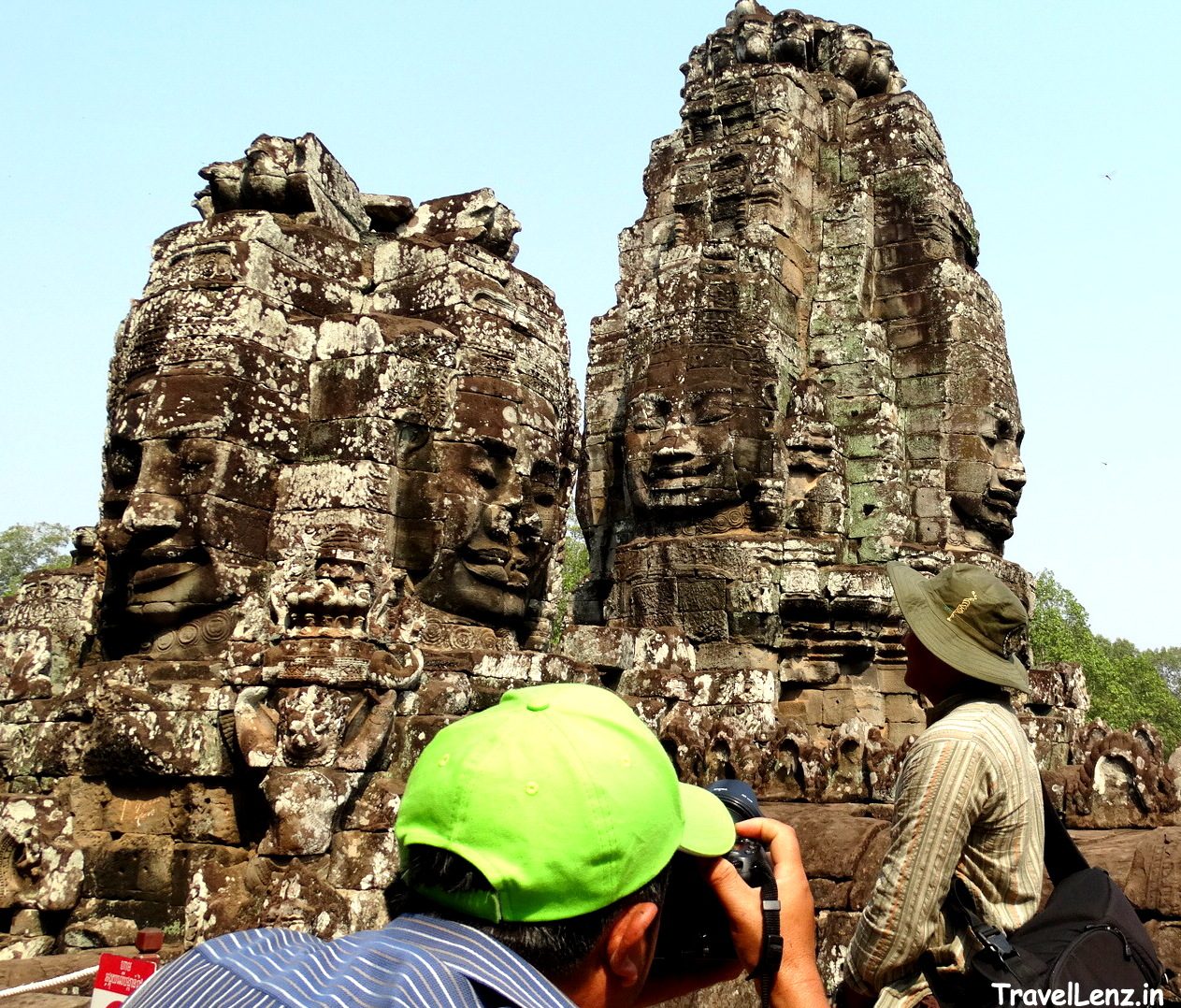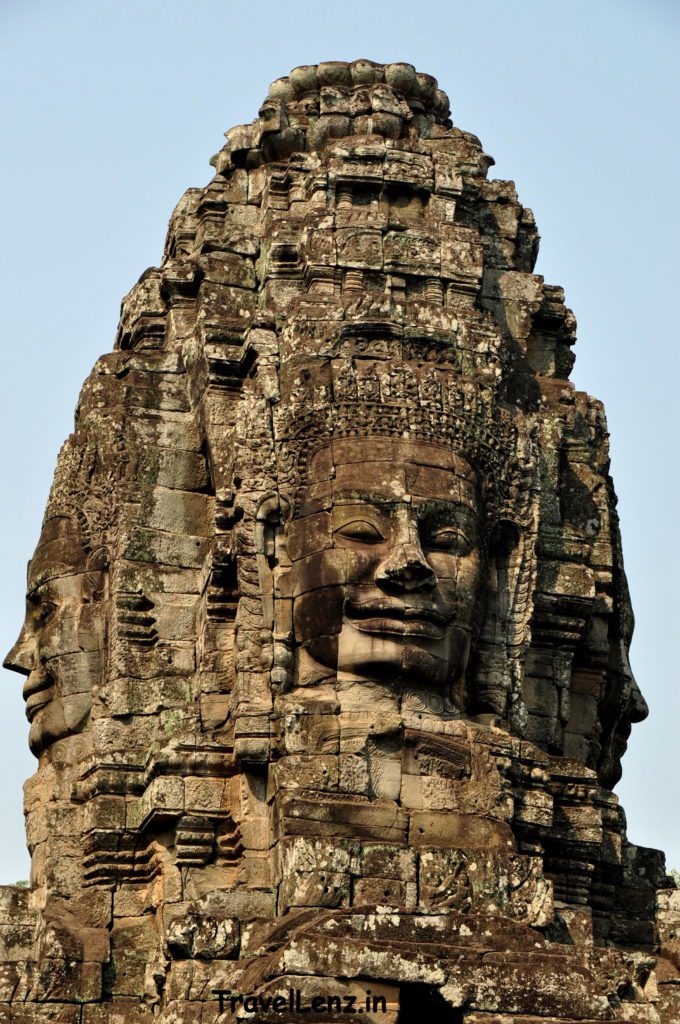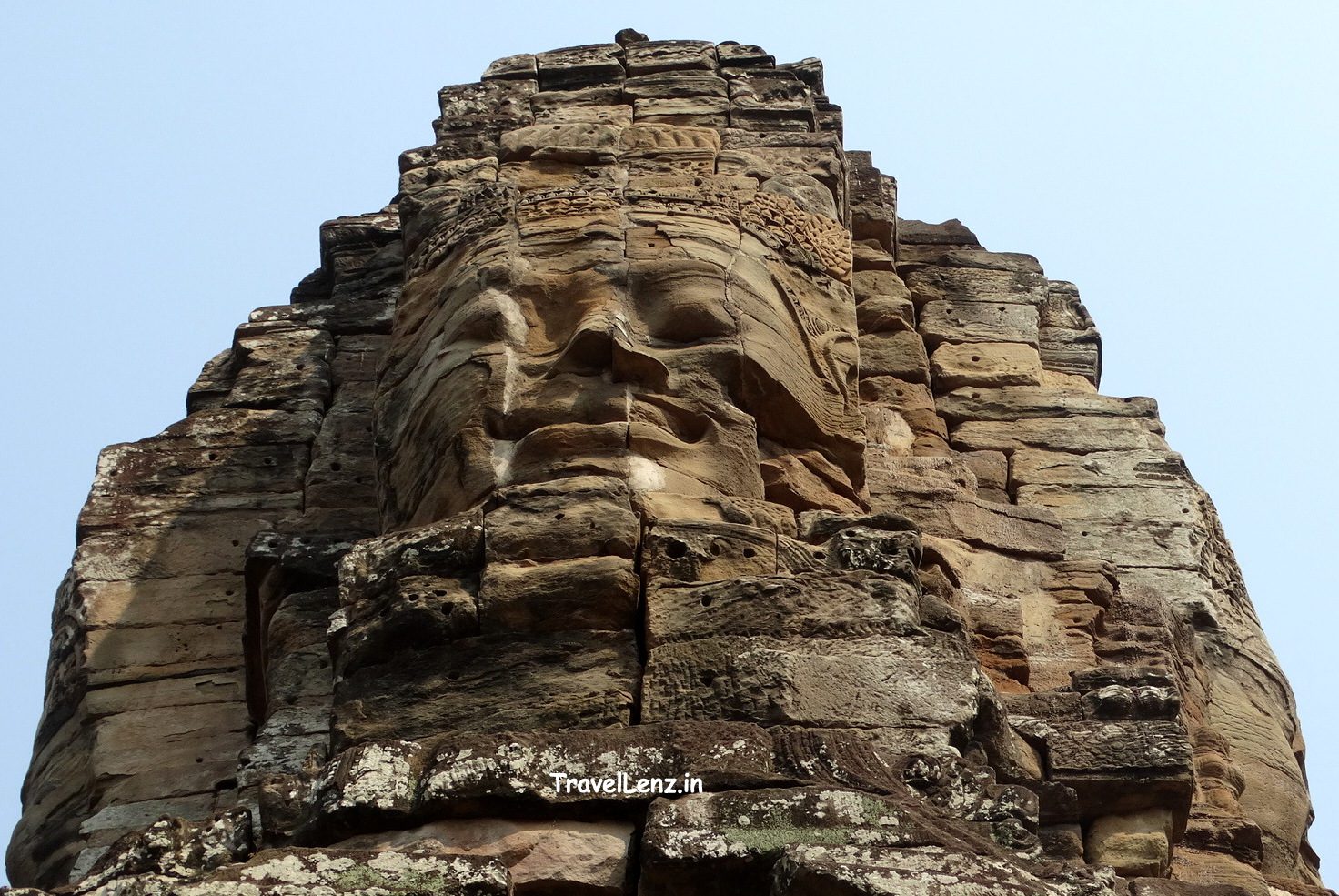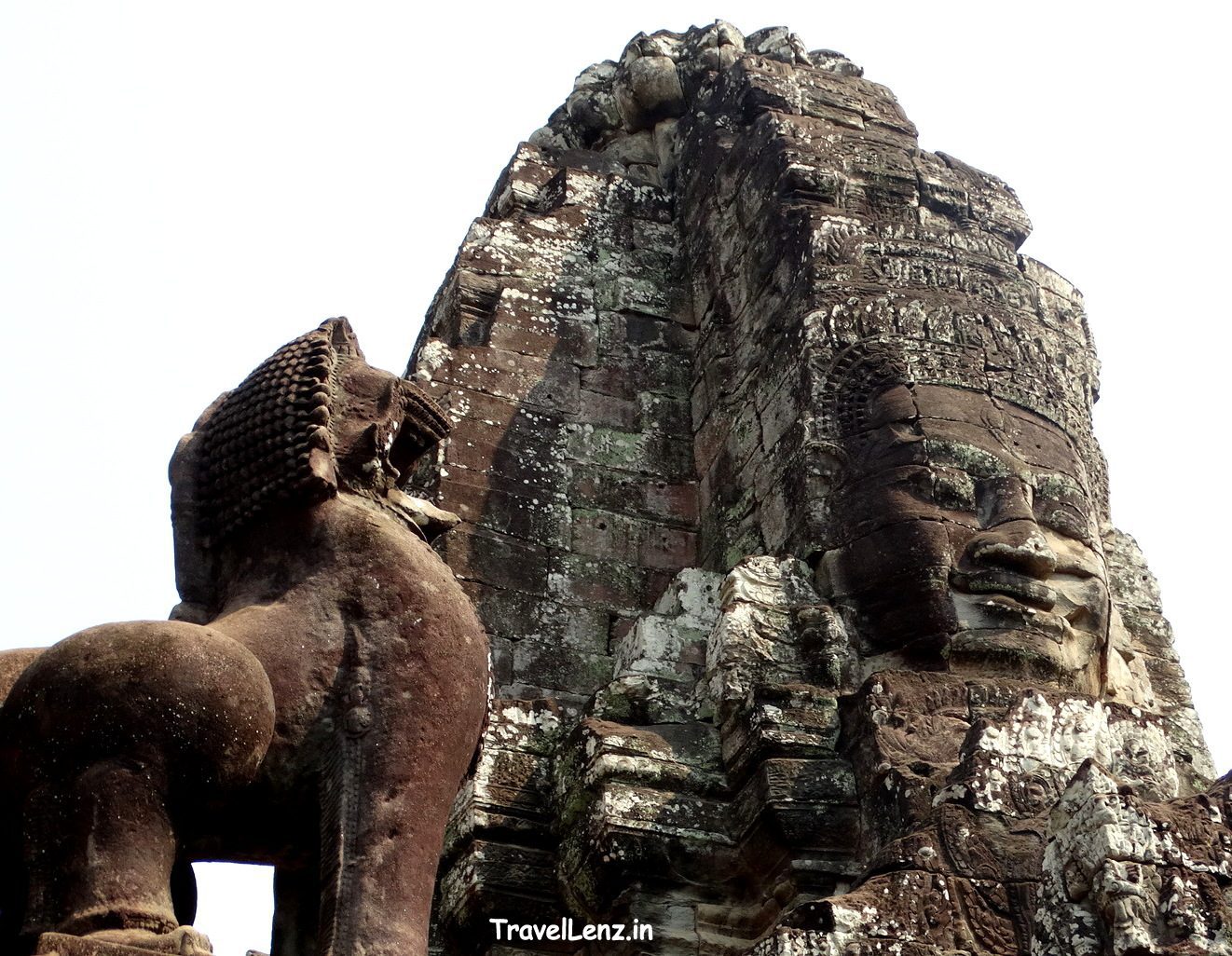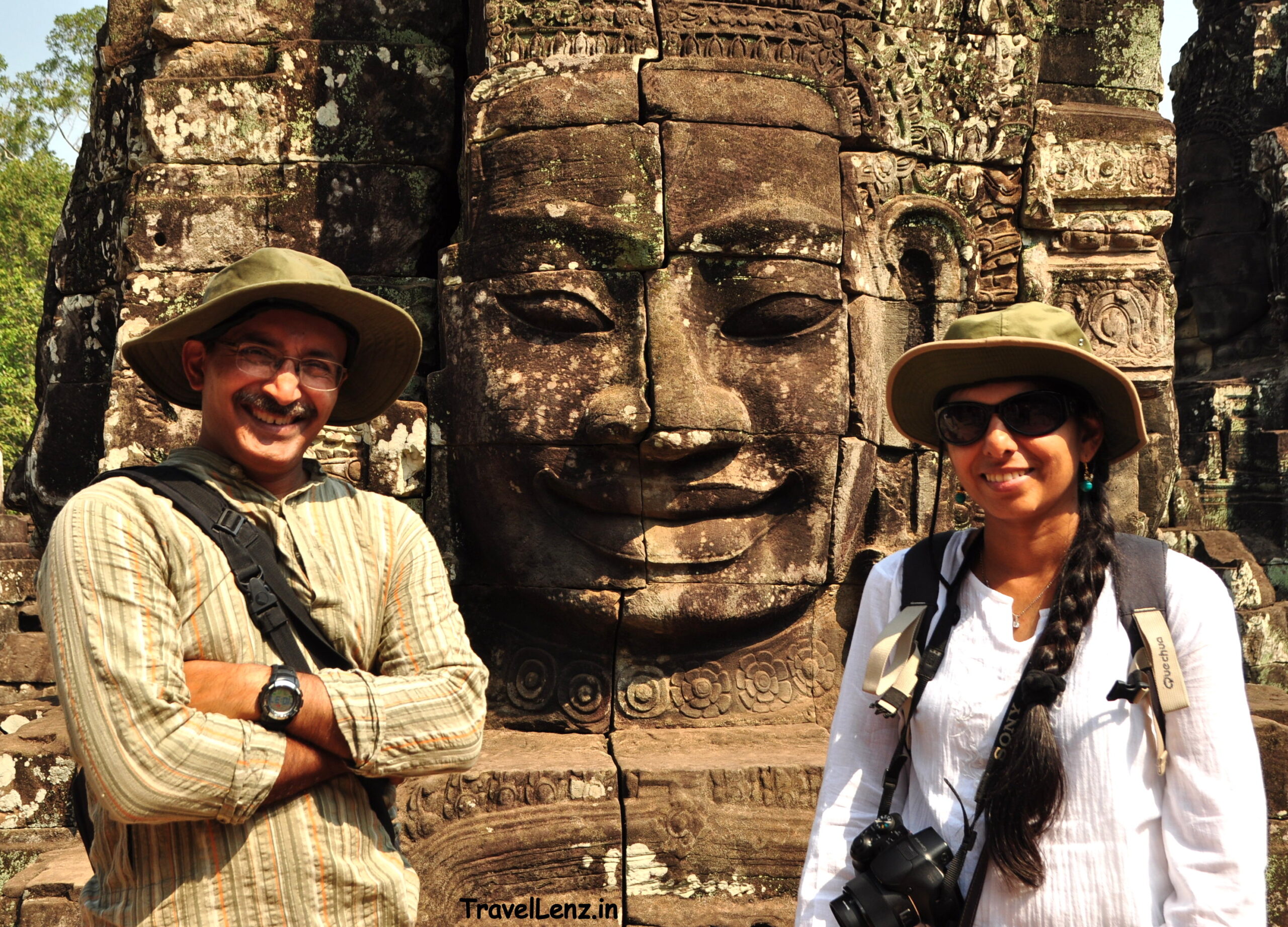Last Updated on May 20, 2021
From the South Gate Tower, we drove towards the state temple of Jayavarman VII, the Bayon temple, popularly known as the Face Tower that stands at the exact centre of the city of Angkor Thom.
Bayon and the mysterious smiling faces
From a distance, Bayon looked like a massive pile of grey stones. But as we drew closer, a few faces started to appear amidst the stone towers. A few!!! Well, more than 200 of them.
As we walked towards the temple, we realised that the Bayon temple was not just about the mysterious smiling faces. We climbed a few steps to reach a large terrace that was adorned by guardian lions and Naga (snake) balustrades. All the Khmer temples in Cambodia and Thailand have Naga bridges and guardian lions.
Read more: The Khmer temples in Thailand – Phanom Rung, Phimai and Muang Tam.
The Naga balustrades at the approach to all temples were believed to link the outer material world to the inner spiritual world. Another theory was that the Nagas along with the stone lions were the guardians of the royal wealth.
Bas-reliefs at Bayon
Walking up the steps we realised that the temple had three levels. The first and second levels had square galleries featuring bas-reliefs.
The bas-reliefs on both the galleries contained scenes from everyday life and depictions from the battlefields, mainly King Jayavarman’s military victories.
Scenes from busy markets, fishing, cockfights and jugglers alternated with scenes from Khmer battles with Chinese and Chams and battle processions.
Most of the scenes appeared in more than one horizontal panels.
It was amazing to see the detailing of the 13th-century Cambodians at work, rest, and play.
The connecting chambers had smaller shrines, a few of them had beautiful statues of Buddha and Vishnu. In another gallery we found a linga. The explanation – different Kings venerated different Gods at different times.
Bayon was built as a Buddhist temple. We found a statue of a seated Buddha sheltered under the hoods of a snake in a shrine.
Close-encounter with the faces
Bayon came across as a complex maze of galleries and claustrophobic passages on the first two levels. As we climbed onto the third level everything became so open, clear, serene and crowded.
Bayon is one temple that is always busy. There are visitors pouting and kissing and patting into the air in all imaginable angles, and taking selfies with the faces. Well, we tried our luck too.
Same as the faces on the gate towers at Angkor Thom, these faces are also believed to be images of the Bodhisattva Avalokitesvara.
Originally the Bayon had 54 towers, each of which had four faces looking into the four cardinal points. Today, 49 towers remain and all the faces on the existing towers look almost the same with slightly curved lips, half-closed eyes, and flat noses.
Some historians claim that the faces are representations of Cambodia’s most celebrated king – Jayavarman VII. Or maybe the king considered himself as a representation of God and wanted his face to be adorning all the towers of Bayon.
Now, most of the towers contain four faces, some have three, we even spotted a tower with only one face.
Tip: Bayon falls on the main temple circuit, and so is always crowded during the day. In the mornings, while everyone is at Angkor Wat, catching the sunrise, few people visit Bayon. That’s the best time to visit Bayon.
Our next stop was Baphuon, a three tiered temple next to the enclosure of the royal palace.


